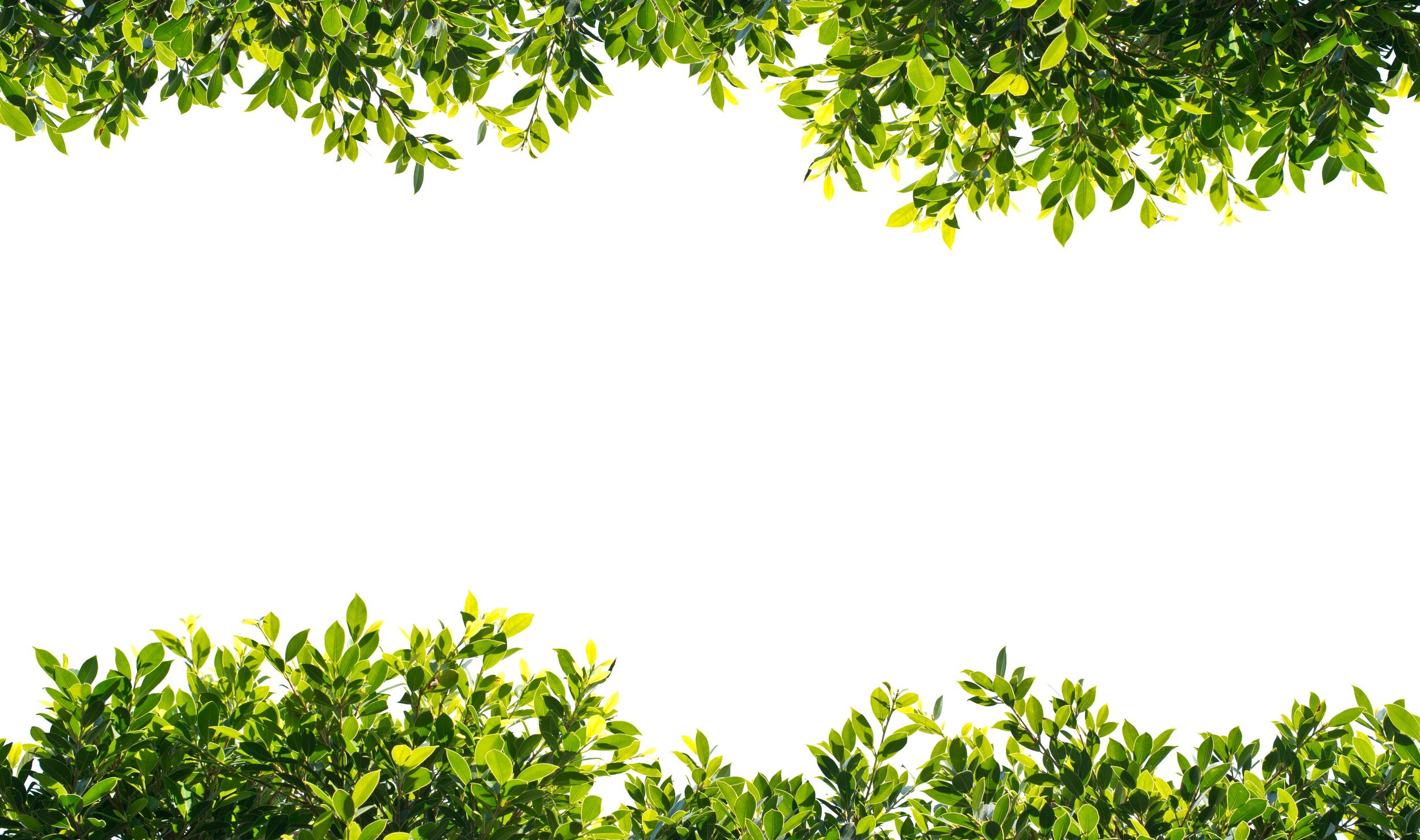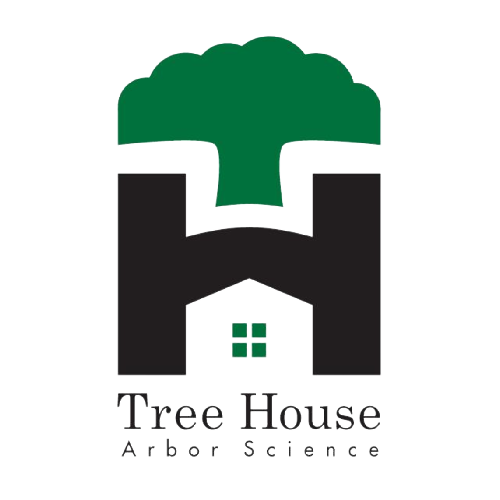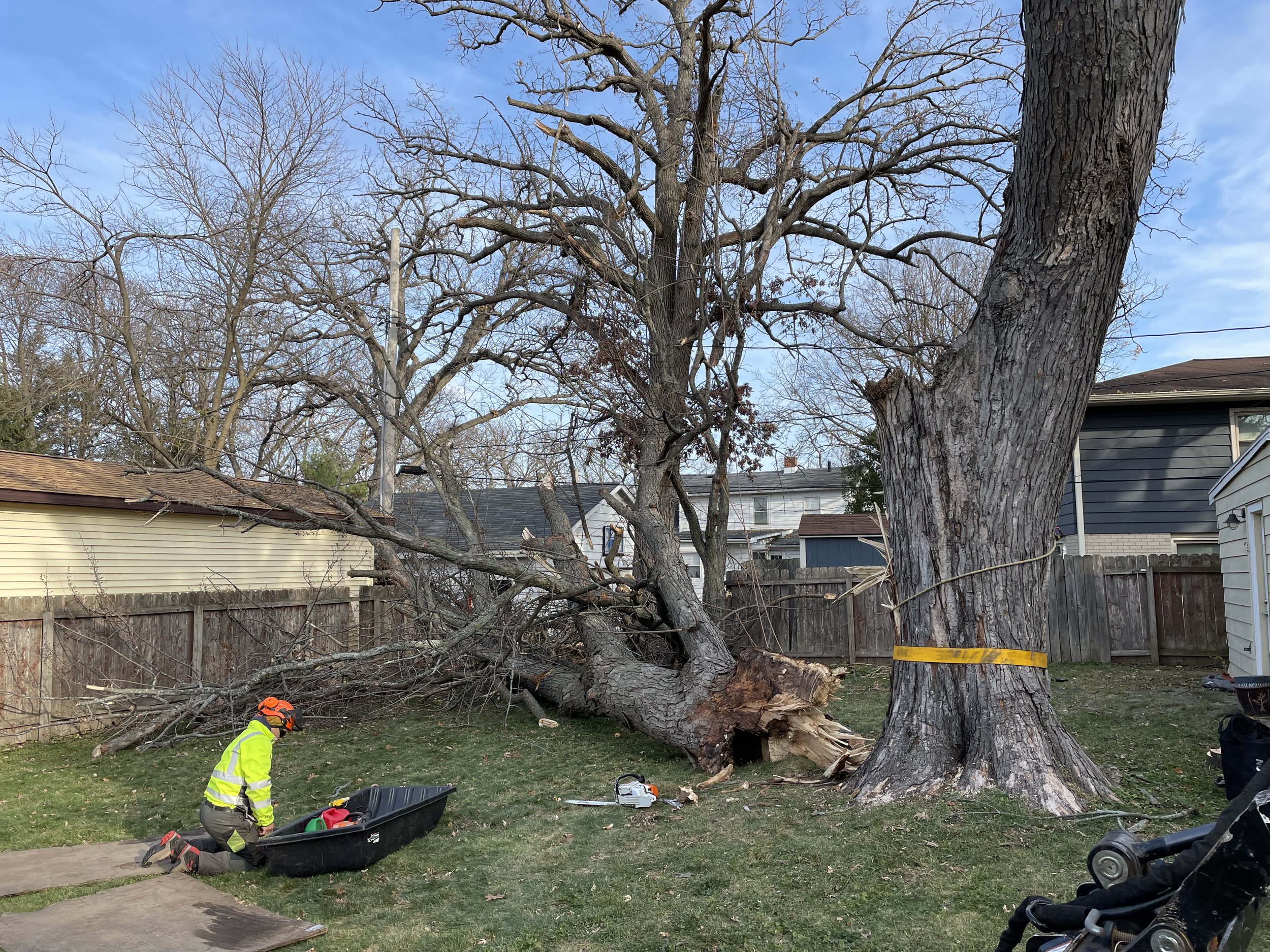
Tree Storm Damage Prevention and Clean-Up
Your trees face wind, rain, snow, sleet, and more as the seasons bring storms to Madison. The last thing you want is a tree falling during a storm. And if one does, you need a professional to help you manage the damage right away.
A tree that falls during a storm can cause injury and property damage. We help you reduce that risk.
Mother Nature’s biggest threat to your trees isn’t usually rain, hail, or even snow. It’s the wind that accompanies Wisconsin’s storms in every season. High winds can cause everything from the loss of a few small branches to a big, mature tree falling. There are two ways we can help your trees in the face of storms:
Proactive tree care to make your trees resistant to storm damage.
Prompt, expert, safe evaluation and clean-up of storm damage.
What is Proactive Tree Care?
Routine evaluation and maintenance of your trees is the best way to help them weather Wisconsin’s storms.
Young Trees
Young trees that are regularly pruned are far less likely to develop structural weaknesses as they mature. Avoiding formations like tight, V-shaped unions and co-dominant stems or trunks makes mature trees stronger during bad weather.
Young trees, especially those in exposed locations, may also benefit from staking. We use strong metal stakes and soft straps to support your trees and establish a strong root system. Staking helps prevent leaning and protect new trees from the wind.
Mature Trees
Mature trees need to be trimmed to keep their canopies balanced and remove dead branches and excess weight. These trees may have already developed structural weaknesses. During trimming or routine evaluation, we look for the telltale signs of weak unions that are prone to splitting and failing in high winds.
If we discover a weakness in a mature tree, we may recommend a cabling system to reduce the risk of failure during storms.
Winter Storm Damage
While wind damage is common in Wisconsin, so is damage caused by cold temperatures, heavy snow, and ice storms. To keep Madison’s urban forest healthy, we need to take care of our trees all year.
It doesn’t take a storm to damage trees. Our regular Madison winter conditions are harsh enough to endanger many trees.
Low temperatures can damage root systems, especially in young trees. Heavy, wet snow and ice can break branches and even split weak unions, causing a tree to fail. Evergreen foliage can dry out in the cold winter sun, and bark can be damaged by a harsh Wisconsin winter.
High winds don’t always mix well with big trees. We helped this Madison homeowner clean up the damage from their fallen tree.
Storm Damage Experts
No prevention measures are perfect. A big storm with high winds can sometimes bring down even the strongest tree. If that happens, you need someone with the expertise and experience to assess the tree and remove the risk of further damage or injury.
Our Madison arborists will get to you quickly and thoroughly evaluate your options. Major tree failures often lead to complete removal. We’ll get everything safely cleaned up so you can get back to normal as quickly as possible.
Does a tree always need to be removed if it is damaged in a storm?
No. You’ll often see small branches on the ground after a storm. Even the loss of a larger branch doesn’t always mean a tree needs to be removed. Consult with our Madison arborists to determine the best course of action for your tree if it is damaged in a storm.
How do I know if my tree suffered damage in a storm?
Some signs are easy to spot, like downed branches or major splits. Others don’t show themselves right away. A tree may develop a crack or other damage that will worsen over time if not treated.
If a big storm in your neighborhood whipped your trees around, give us a call. We’ll help you determine if your trees have sustained any damage and provide options for helping them survive the next big storm.
How do I protect my fruit trees from storm damage?
There are some special precautions you can take to reduce fruit tree storm damage. Ask our arborists about windbreaks or special frost cloths to protect them from both wind and cold.
What other types of tree damage happen in the winter?
Hungry animals like deer and rabbits like to nibble away at bark and foliage when cold temperatures and snow cover make it hard for them to find food. Young trees are particularly vulnerable. Ask our arborists about wrapping your trees’ trunks or putting fencing around trees at risk.
Madison trees are also affected by industrial road salt and de-icing salt used by homeowners on sidewalks and driveways. The City of Madison has reduced its use of road salt in recent years and recommends that we all do the same. Ask our arborists about alternatives to salt that are effective for de-icing and safe for plants, trees, and pets.
Frequently Asked Tree Storm Damage Questions
What can I do to prevent storm damage to my trees?
There are several ways you can help your trees weather storms.
Water. Yes, you do need to water your trees! It keeps the root systems strong. Check out our article to find out how much water your trees need.
Mulch. Mulching around the base of your trees encourages a strong root system and offers a layer of protection. It also helps prevent root damage from cold temperatures.
Location. Plant trees where there is some protection from the wind and cold. Consult with one of our arborists before planting a new tree. We can help you choose the perfect spot.
Tree Type. Choose trees that are native to Wisconsin. They have adapted to the changes in our seasons and are more likely to withstand a summer storm or a winter cold snap.
Contact Us
Contact us for help both preventing and removing storm-damaged trees. We’ll respond promptly and develop a plan that fits your trees and your yard.




